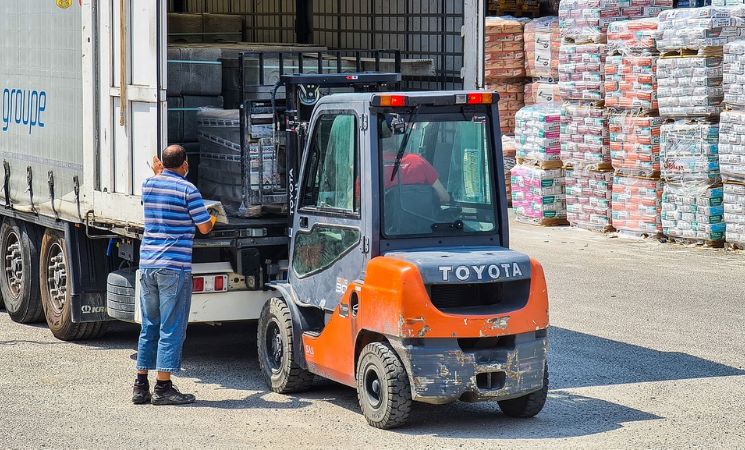Investing in a used forklift can be a cost-effective solution for businesses that require lifting and material handling equipment but want to avoid the high expense of purchasing a new one. However, evaluating the condition of a used forklift before purchasing is crucial to ensure you’re making a sound investment.
A thorough inspection can help identify any potential issues, saving you from future costly repairs and downtime. Here’s a detailed guide to help you assess the condition of used forklifts before purchasing.
Understand Your Needs
Before diving into the inspection process, clearly understanding what you need the forklift for is important. Consider the following questions:
- 1. What type of lifting capacity does your business require?
- 2. Will the forklift be used indoors or outdoors?
- 3. What kind of attachments will you need (e.g., side shifters, fork positioners)?
- 4. How many hours per week will the forklift be in use?
Knowing your operational needs can help you quickly determine whether the used forklift you’re evaluating is the right match.
Check the Forklift’s Age and Hours of Operation
Like any vehicle or machinery, a forklift’s longevity is impacted by its age and usage. The hours of operation are similar to a car’s mileage, and many operational hours can indicate significant wear and tear.
Check the forklift’s hour meter to know how much it’s been used. Generally, a well-maintained forklift can have a lifespan of 10,000 to 15,000 operational hours, depending on the model and the work type.
Inspect the Mast and Forks
The mast and forks are critical components of a forklift and must be in good condition for safe and efficient operation. During your inspection, ensure the following:
- 1. Mast: The mast should raise and lower smoothly without any jerky movements. Check for bends, cracks, or damage to the rails.
- 2. Forks: Look for any signs of wear or bending in the forks. Ensure they are even and properly aligned. Worn forks can compromise the forklift’s lifting capacity and safety.
Examine the Tires
Forklift tires can be expensive to replace, so their condition is important in your evaluation. Inspect the tires for:
- 1. Wear and tear: Look for cracks, cuts, or flat spots on the tires. Worn tires can affect traction and safety.
- 2. Cushion tires: These are typically used for indoor forklifts and should have sufficient tread. If the tread is worn down, they will need to be replaced soon.
- 3. Pneumatic tires: These are used for outdoor forklifts and should be checked for punctures or leaks.
Evaluate the Engine and Hydraulics
The engine is the heart of the forklift, so it’s essential to ensure it is in good working order. Check for:
- 1. Oil leaks: Inspect the engine for any oil leaks, which can indicate serious mechanical issues.
- 2. Fluid levels: Ensure adequate engine oil, hydraulic fluid, and coolant levels. Low fluid levels could suggest neglect.
- 3. Hydraulic system: Test the hydraulic system by raising and lowering the forks multiple times. Listen for unusual noises and check for hydraulic fluid leaks.
Inspect the Battery (for Electric Forklifts)
The battery’s condition is critical if you’re considering an electric forklift. Batteries are expensive, and a failing battery can add significant costs. Here’s what to look for:
- 1. Battery age: Ask the seller for the battery’s age and how often it has been charged.
- 2. Charging history: Batteries have limited charge cycles, so ensure the battery has not been overcharged.
- 3. Voltage and capacity: Test the battery’s voltage and capacity to meet the forklift’s requirements.
Check the Brakes and Steering
Operational safety is paramount, and the brakes and steering must be in good condition. Test the brakes to ensure they are responsive and don’t make grinding or squealing noises. Also, check the parking brake to ensure it holds the forklift in place on an incline. The steering should be smooth, with no excessive play in the wheel, as this could indicate wear in the steering mechanism.
Review the Maintenance History
A well-maintained forklift is a good sign of reliability. Ask the seller for the forklift’s maintenance records to understand how well it has been cared for. Regular oil, tire replacements, and hydraulic fluid changes are all signs of good upkeep. Consider this a red flag if the maintenance history is unavailable or incomplete.
Conduct a Test Drive
Once you’ve completed the physical inspection, it’s time for a test drive. Drive the forklift to evaluate its overall performance. During the test drive, pay attention to:
- 1. How smoothly the forklift operates.
- 2. Any unusual noises or vibrations.
- 3. The responsiveness of the controls, brakes, and steering.
- 4. The ease of shifting between forward and reverse gears.
Consider a Professional Inspection
If you’re not confident in your ability to assess the condition of the forklift, consider hiring a professional mechanic or a technician to conduct a thorough inspection. They will be able to identify any hidden issues that could affect the forklift’s performance in the long run.
Conclusion
Purchasing a used forklift can be a great way to save on upfront costs while still meeting your material handling needs. However, it’s important to perform a comprehensive inspection to avoid future headaches. By checking the engine, hydraulics, tires, mast, and forks, as well as reviewing maintenance records, you can confidently evaluate the condition of a used forklift before purchase. Investing time in this process will help ensure that the forklift you choose is reliable, safe, and worth the price.











